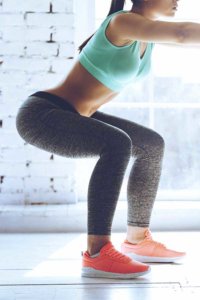Key in Lock Syndrome – Lunch and Learn: Episode 2
 Hello and welcome to the blog for the Center for Spine Care and Mobility (or CSC+M as some of you might know us as)! I am a physical therapist in NYC who specializes in pelvic floor and orthopedic therapy. I would like to take this moment to keep you updated on some of the fun new educational tools our clinic has been developing for the public.
Hello and welcome to the blog for the Center for Spine Care and Mobility (or CSC+M as some of you might know us as)! I am a physical therapist in NYC who specializes in pelvic floor and orthopedic therapy. I would like to take this moment to keep you updated on some of the fun new educational tools our clinic has been developing for the public.
Since the start of the new year, we have been putting on a Lunch and Learn series at the end of each month from 12 to 1:30 pm where we discuss a topic, indulge in snacks, and take home some new skills to use daily. For those who missed it, the first episode we discussed posture and positional habits and this talk featured our amazing Physical Therapist Renuka Pinto, who discussed our Gravity fit and DorsaVi devices and how we use these tools to battle poor postures in the clinic. The most recent episode took place this past Thursday and featured a rather interesting discussion (led by yours truly) about a sensitive condition known as urge urinary incontinence or as some people know it, “key in lock syndrome.”
So what exactly is “Key in Lock Syndrome”? A Midtown NYC Physical Therapist Explains.
Key in Lock syndrome is when you have a very strong urge to urinate and the bladder is unable to control holding liquid due to involuntary contractions. For example, have you ever gone out shopping during the day and didn’t have to go to the bathroom until you saw one? And at that point you realize you need to go, you find yourself running to the toilet because of an overwhelming urge to urinate but for some reason you didn’t experience it at any other point during the day? If you are experiencing these symptoms, or even worse – leaking at least one drop before you get to the bathroom, you should come in for an evaluation at our clinic! This is something that CAN be treated because much of this type of urinary incontinence is due to habits we form from lifestyle choices.
What habits contribute to Urge Urinary Incontinence?
To rehash on some of the major points we discussed this Thursday, some of the biggest contributors to this condition include poor nutrition, bad bathroom habits, and stress. Thankfully, just by changing these simple factors we can tackle a lot of what is causing the overwhelming urges to use the bathroom during the day! Poor nutrition can lead to irritation of the bladder which causes you to use the bathroom more often – try to avoid foods like tomatoes, seltzer, sugars, coffee, and alcohols if you think you might be experiencing any of these symptoms. Bad bathroom habits include squatting over the toilet while urinating, JICing (just in case uses of the bathroom), and urinating with a stream less than 8 seconds long. Finally stress leads to a tightening of the pelvic floor muscles and difficulty contracting when needed. If you or anyone you know is experiencing these symptoms, please feel free to stop by the clinic for a consult and recap on episode 2 of our lunch and learn series!
So what’s the next episode?
Join us at the center for spine care and mobility to kick it into spring for episode 3 of our lunch and learn series! We will be discussing nutrition, exercise, and maybe even tackle some self defense to celebrate the upcoming warm months and get us jump started for beach season. Stay tuned for updates on this free event and please join us for some healthy food options during this informational session! See you all soon!
